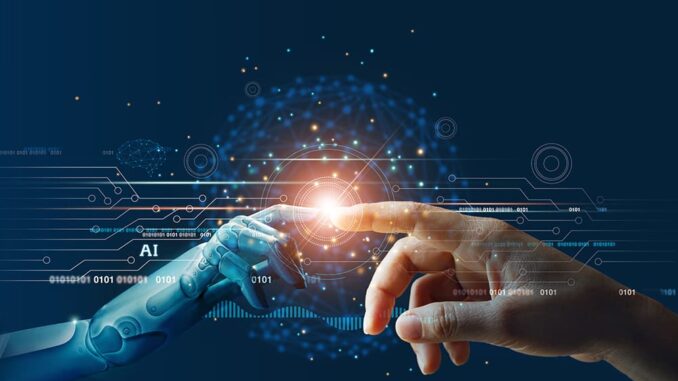
The impact of artificial intelligence (AI) on employment is a complex topic that involves both potential benefits and challenges.
Understanding how AI affects various job sectors, the labor market, and the nature of work is crucial for policymakers, businesses, and workers themselves.








Here’s a detailed examination of the multifaceted impact of AI on employment:
### **1. Job Displacement**
– **Automation of Routine Tasks**: AI can automate tasks that are repetitive, predictable, and rule-based. This is particularly relevant in sectors such as manufacturing, logistics, and customer service, where machines and algorithms can perform these tasks faster and more accurately than humans.
– **Vulnerable Job Categories**: Jobs that require lower skill levels are often more susceptible to automation. For instance, roles involving data entry, assembly line work, and basic customer support may see significant reductions in demand.
### **2. Job Transformation**
– **Augmentation of Human Work**: Rather than outright replacement, many jobs will be transformed, with AI taking over mundane tasks, allowing workers to focus on higher-value responsibilities that require critical thinking, creativity, and emotional intelligence.
– **Enhanced Productivity**: AI can improve productivity by providing insights, automating repetitive tasks, and assisting in decision-making, which can lead to a more efficient workforce.
### **3. Creation of New Jobs**
– **Emerging Roles**: As AI technologies improve, new job roles will emerge that didn’t exist before. These may include data scientists, AI ethicists, machine learning engineers, and roles related to AI maintenance and oversight.
– **Innovation-Driven Growth**: Industries that leverage AI may experience growth, leading to job creation. For example, the health tech sector might expand due to AI’s capabilities in diagnostics and personalized medicine.
### **4. Skills Gap and Workforce Development**
– **Need for Reskilling**: Many workers may need to acquire new skills to adapt to technologies, creating a demand for reskilling and upskilling initiatives. Vocational training programs and continuous education will be vital to prepare the workforce for AI integration.
– **Focus on Soft Skills**: As AI takes over technical tasks, there will be a greater demand for soft skills such as communication, teamwork, and emotional intelligence.
### **5. Economic Disparities**
– **Wage Polarization**: The impact of AI may contribute to wage disparities, with high-skilled workers benefiting from increased demand and compensation, while low-skilled workers risk job losses or stagnant wages.
– **Regional Inequalities**: Regions with advanced technological infrastructure may benefit from job growth, while those without may face higher unemployment rates. This can exacerbate existing economic discrepancies.
### **6. Changes to Work Environment**
– **Flexible Work Arrangements**: AI can facilitate remote work and flexible job models, potentially leading to a better work-life balance for many employees.
– **Collaboration with AI**: Many jobs will require collaboration between humans and AI, leading to new dynamics in teamwork and the redefinition of roles.
### **7. Ethical Considerations in Hiring Practices**
– **Bias in AI Systems**: The use of AI in hiring and recruitment processes carries the risk of bias, as algorithms might perpetuate existing biases found in the data.
– **Worker Surveillance**: AI can be used for monitoring and evaluating employee performance, raising concerns about privacy and the implications for workplace culture.
### **8. Potential for Economic Growth**
– **Increased Efficiency**: The integration of AI can lead to increased efficiency and innovation, contributing to overall economic growth.
– **New Business Models**: Businesses may adapt new models utilizing AI, which could create new market opportunities and increase job availability in certain sectors.
### **Conclusion**
The impact of AI on employment is significant and multifaceted, with both pros and cons. While AI presents opportunities for enhanced productivity, new job creation, and economic growth, it also poses challenges related to job displacement, skills gaps, and ethical considerations. Navigating this transition will require proactive strategies from governments and organizations, focusing on education, workforce development, and policies that support affected workers. Emphasizing adaptability, continuous learning, and ethical use of AI will be crucial for achieving a balanced and just labor market in the age of AI.

Leave a Reply